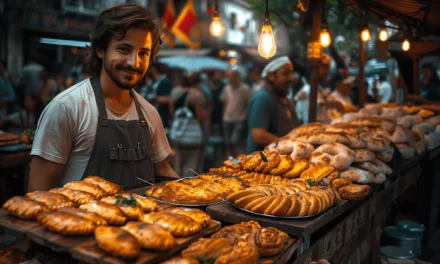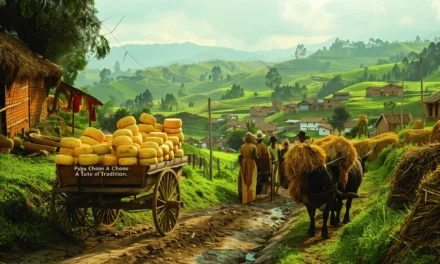The boozy ancient origins of Rum
The history of rum is inextricably linked to the history of sugar cane. When you think of sugar cane, you usually envision the long, sweet stalks used to produce sugar and molasses. What you may not know, however, is that sugar cane originally came from Papua New Guinea1.
The sweet grass was first taken to the Asian continent by migrations during prehistoric times. Around 500 BC, people could enjoy a sweeter life after getting the technology to get sugar for the first time in India1.
Persians are often credited with inventing alcohol. While this may not be true, they did perfect the art of distilling sugarcane juice into alcohol. For centuries, they worked on perfecting their process, and while we may not know for sure who invented it, we do know that the Persians were the ones who perfected it2.
We can thank Marco Polo for giving us the insider scoop on this delicious wine of sugar. In the 14th century, Marco Polo discovered “a very good wine of sugar” while exploring the Persian empire1.
Muslims might not be able to drink alcohol, but that doesn’t mean they can’t make it! In fact, they’re experts at distilling, and they use alcohol to make all kinds of cosmetics1.
Sweet Success: How Sugar Cane Flourished in the West Indies
Sugar cane was first introduced to the Caribbean by Christopher Columbus in 1493. The Spaniards immediately began planting it on the island of Hispaniola, which is now Haiti and the Dominican Republic. At first, sugar cane was used primarily for chewing. However, it wasn’t long before someone had the brilliant idea to distill the juice of sugar cane into an alcoholic beverage. This delightful drink was soon dubbed rum3.
Today, sugar cane is grown in tropical climates all over the world. Rum is made from the fermented juice of sugar cane. It is believed that the first rum was made on the island of Barbados in the early 1600s. Rum quickly became the most popular drink in the Caribbean and was an important commodity in the slave trade4.
Columbus was looking for something special when he set sail on his second voyage. He introduced the world to sugar cane. On his second trip, he found the perfect environment for the crop to thrive. The sugar cane flourished there, and Columbus knew he had found the perfect place to grow5.
The Spanish transferred their knowledge and techniques for cultivation and experience there from the Canary Islands. The Dutch and English merchants traveled the world on their ships, exchanging different kinds of products, and the French taught about cultivation and processing6.
After sugarcane was introduced in 1493 to the Antilles, it didn’t take long for sugar to become an essential part of life in the West Indies. At first, sugarcane was valued for the sugar it produced. But eventually, the producers discovered other uses for sugarcane, and it became even more important!4

Molasses isn’t just a delicious ingredient in gingerbread cookies; it can also be used to make alcohol! The delicious thick brown liquid (“molasses”) that remains after the sugar extraction could be fermented and distilled to produce alcohol6.
From Sugar Cane to Rum: How a By-Product Became a Delightful Beverage
When it comes to rum, it all started way back in the early 17th century as a by-product of sugar production in the Antilles. Yeast and other microbes quickly grew in the leftover molasses and wash waters; the yeasts produced alcohol and all kinds of aromatic substances, many of which were unpleasant4.
Rum is a delightful beverage that was made by using the juice from the second and third pass of the cane bagasse through the mill and from the foam that forms on the bottom of the sugarcane juice and syrup boiling process6.
And those responsible for the creation of rum? None other than the plantation enslaved people! They discovered that by fermenting sugar cane, they obtained a drink with an extraordinary taste. This was likely due to the fact that they used molasses and other leftovers rather than the best sugar to make alcohol that plantation owners often sold2.
In 1661, Jamaica became newly occupied by the English and started to produce sugar and a liquor called “kill-devil” and “Rumbuillon” indistinctly. This liquor was terrible, acrid, and infernal and would make you want to kill the devil himself after just one sip!4
Once upon a time, the production of rum began in the Antilles. It was a land of enchantment, with its main centers continuing to ruminate there to this day: Cuba, Saint Thomas, Haiti, Jamaica, Santa Cruz, Guadeloupe, Martinique, Trinidad, Barbados, and Puerto Rico3.
And those responsible for the creation of rum? None other than the plantation enslaved people! They discovered that by fermenting sugar cane, they obtained a drink with an extraordinary taste. This was likely due to the fact that they used molasses and other leftovers rather than the best sugar to make alcohol that plantation owners often sold2.
.
The earliest mention of Rum
It was back in the 1600s in Barbados (specifically 1650), when people started mentioning a drink made from fermented sugar cane. That drink eventually acquired the name “rum” in 1667, which is a combination of the Spanish word “ron” and the French word “rhum.” it was called “guildive” and later “tafia,” an African or indigenous term4.
Did you know that rum is mentioned in the very first official order issued by the Governor of Jamaica? The first official mention of “rum” appears in an order issued by the Governor of Jamaica dated July 8, 16613.
The origin of the word rum is uncertain. Some historians attribute it to the word “rumbuillon” from the “Creole” language of Barbados; derived from “rheu” = stem, and from “buillon” from the French “bouillon” = broth4.
Other historians look up the word “rumbuillon” in a dialect of Devonshire, or Yorkshire, in England, where it would mean great tumult; later, due to the tendency of the English language to cut and simplify the words, “rumbuillon” would derive in “rum”, which the Spanish would transform into “ron” 4.
The Economic Importance of Rum in the 17th and 18th Centuries
Rum was an essential economic factor in the 17th and 18th centuries. It was exported to Europe from the Antilles and used in the African slave trade and the fur trade with Indians from North America3.
Early distillation equipment and methods produced a robust and harsh liquid given mainly to enslaved people and sailors from this mixed material. In Africa, this was exchanged for more enslaved people3.
That’s how the English colonists felt about rum. Rum was exported to the English colonies in America. Still, the demand was so high that distilleries were established in New York and New England in the 17th century. From there, imports were molasses. In 1763, there were 150 distilleries in New England, sourcing mainly from the French West Indies3.

- Pacult, F. P. (2002, July). Do Rums Reflect Their Places of Origin? Retrieved from Wine Enthusiast Magazine: https://web.archive.org/web/20131029204124/http://www.winemag.com/July-2002/PROOF-POSITIVE/[↩][↩][↩][↩]
- Gonzalez, Y. (2019, March 27). Tipos y clases de ron. Retrieved from Yo pongo el hielo: https://www.yopongoelhielo.com/blog/tipos-y-clases-de-ron/[↩][↩][↩]
- Marcano, J. E. (2020). El Ron. Retrieved from Mi País: La República Dominicana: https://mipais.jmarcano.com/varios/socio-economia/ron/[↩][↩][↩][↩][↩][↩]
- Morales Bedoya, E. (2010). Fogón caribe. La historia de la gastronomía del caribe colombiano. Barranquilla: Editorial La Iguana Ciega.[↩][↩][↩][↩][↩][↩][↩]
- LLona Larrauri, J. (2003). Enciclopedia del Gourmet. Madrid: Ediciones del Prado.[↩]
- McGee, H. (2011). La Cocina y Los Alimentos (Sexta ed.). (J. M. Ibeas, Trad.) Barcelona, España: Debate.[↩][↩][↩]




